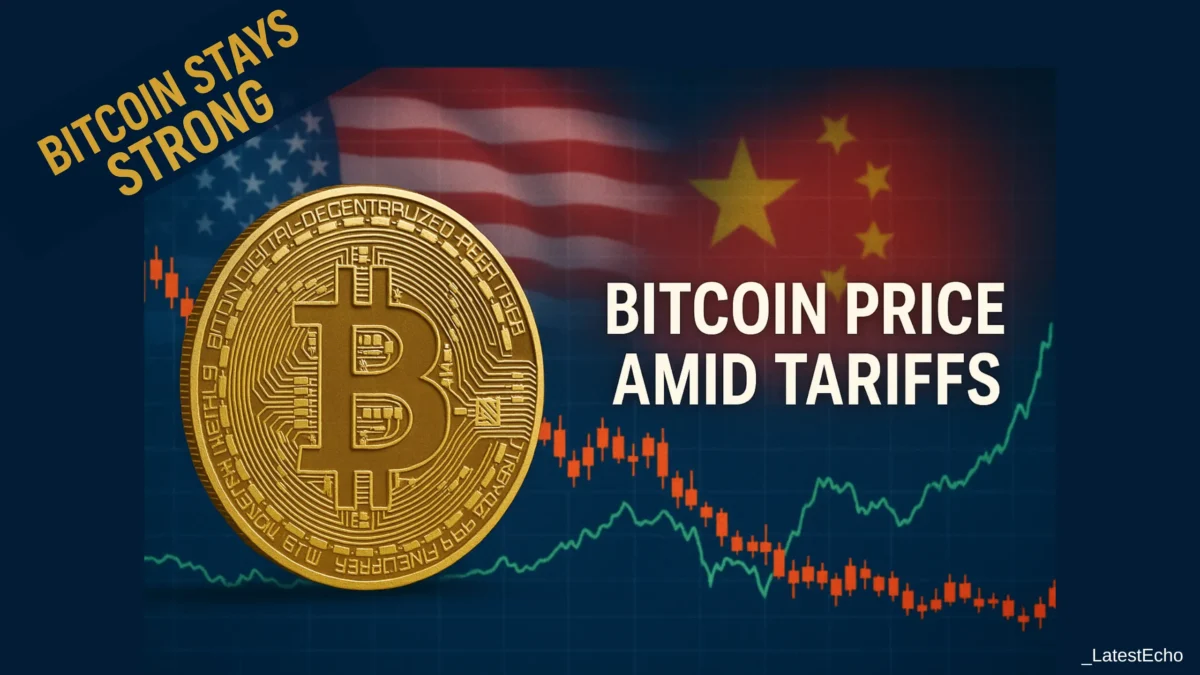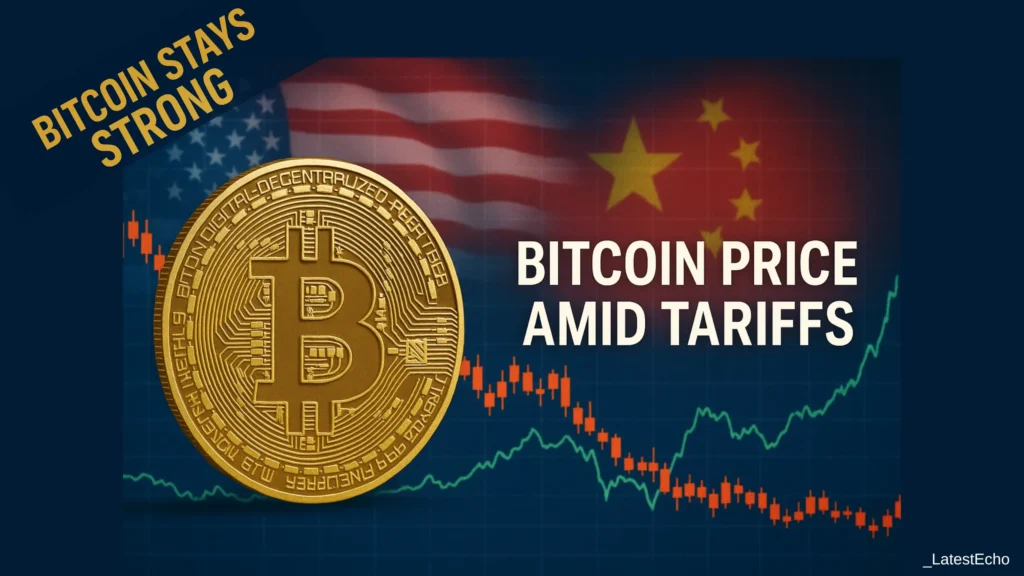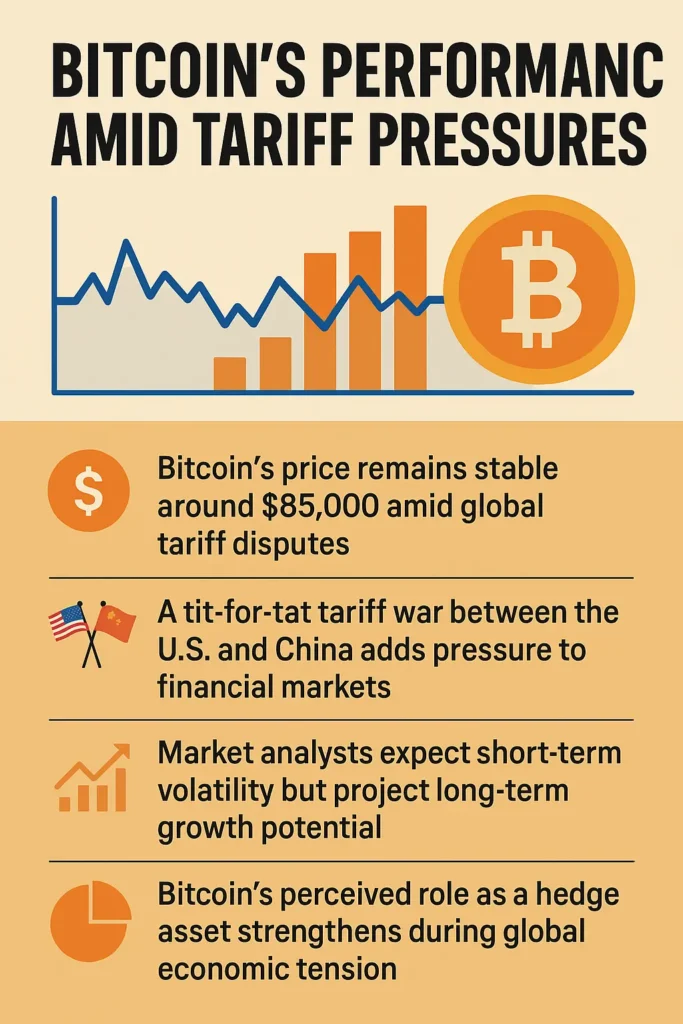
Why Bitcoin Stays Strong in a Tariff-Driven Market
In April 2025, Bitcoin has shown remarkable steadiness, holding around $85,000 despite growing global trade tensions. The U.S. recently imposed aggressive tariffs on Chinese imports, sparking swift retaliation from China. While global equities and traditional markets responded with volatility, Bitcoin’s consistent price trend points to its evolving role in the global financial ecosystem. Its ability to withstand policy-driven pressure suggests a maturing asset capable of navigating uncertainty.

Key Highlights
- Bitcoin’s price remains stable around $85,000 amid global tariff disputes.
- A tit-for-tat tariff war between the U.S. and China adds pressure to financial markets.
- Market analysts expect short-term volatility but project long-term growth potential.
- Bitcoin’s perceived role as a hedge asset strengthens during global economic tension.
- Portfolio diversification now increasingly includes Bitcoin for risk mitigation.
You can also read our previous articles on Tariff, Trade War and Recession, Nvidia AI Powerhouse, DeepSeek’s AI Power and China’s AI shocks the Tech World
Tariff Escalations and Market Reactions
The recent economic strain began with the U.S. government imposing a 145% tariff on Chinese imports, citing national security and trade imbalance concerns. In response, China hit back with its own tariffs, raising the rate on U.S. goods to 125%. These political maneuvers have escalated fears of a global trade war, sending shockwaves across equity markets.
While stocks dipped sharply amid the announcement, the Bitcoin price amid tariffs remained largely stable. This contrast highlights Bitcoin’s increasing resilience and independence from centralized policy changes.
Political Events Shaping Bitcoin Price
Beyond tariffs, geopolitical dynamics also play a crucial role. In early April 2025, diplomatic tensions intensified between major economies, including new restrictions on semiconductor exports and energy sanctions. The financial implications of these moves directly impact investor confidence and risk appetite.
Bitcoin, as a decentralized asset, becomes more appealing when traditional systems appear vulnerable. Investors concerned about currency manipulation, inflation, or capital controls often turn to Bitcoin as a hedge. Consequently, major political announcements and policy shifts have a growing influence on the Bitcoin price amid tariffs, with the crypto market reacting based on perceived economic stability or disruption.
Bitcoin’s Performance Amid Tariff Pressures

Despite the turbulent economic landscape, Bitcoin has maintained its position around $85,000. This steadiness contrasts sharply with traditional financial instruments, many of which have faced erratic swings. Analysts credit Bitcoin’s consistent supply and increasing adoption as a store of value for its resilience.
Additionally, as more businesses and financial institutions accept Bitcoin and other digital assets, the underlying infrastructure becomes stronger—contributing to reduced volatility even during times of macroeconomic instability.
Bitcoin vs. Stock Market: Which is Better for the Future?
Investors are increasingly weighing the pros and cons of Bitcoin against traditional stock investments. Here’s a breakdown:
| Factor | Bitcoin | Stocks |
| Volatility | High but decreasing over time | Moderate depending on sector |
| Regulation Risk | Medium (varies by country) | Low (well-regulated globally) |
| Correlation to Tariffs | Lower correlation | High correlation to geopolitical tensions |
| Liquidity | High (24/7 trading) | High (market hours only) |
| Growth Potential | High, especially in early adoption phase | Moderate to high depending on industry |
| Inflation Hedge | Strong, due to fixed supply | Weak, as many stocks react to inflation |
| Dividend/Passive Income | None | Available through dividends |
While stocks offer steady returns and dividends, Bitcoin represents a new asset class with asymmetric upside. For long-term investors seeking diversification, combining both may provide the best of both worlds—stability from equities and growth from crypto.
Investor Sentiment and Market Outlook
Investor interest in Bitcoin is not just speculative anymore. Many now view it as a hedge during uncertain times. The Bitcoin price amid tariffs has become a reflection of its strength as a non-correlated asset. Analysts remain optimistic, with projections suggesting a rise toward $100,000 by year-end if macroeconomic conditions continue to favor digital assets.
Short-term price dips may occur, but long-term confidence remains intact. Increased institutional involvement also plays a stabilizing role, making Bitcoin a credible option for risk-aware investors.
Bitcoin’s Role in Diversified Portfolios
The importance of diversification in today’s market cannot be overstated. Bitcoin’s performance amid traditional asset weakness makes it a strong candidate for inclusion in modern portfolios. Financial advisors increasingly recommend a small allocation to Bitcoin—typically 1% to 5%—to help manage risk and tap into potential high-growth returns.
Conclusion: Navigating the Future with Bitcoin
The ongoing tariff conflicts and political friction have reshaped how investors view traditional markets. In this evolving financial landscape, Bitcoin stands out as a resilient, decentralized, and increasingly mainstream asset.
As global instability grows, the Bitcoin price amid tariffs offers a unique insight into market confidence. While not without risk, Bitcoin’s ability to hold its value amid chaos reinforces its emerging role as a strategic asset for the future.
Frequently Asked Questions (FAQs)
1. How do tariffs impact Bitcoin’s price?
Tariffs affect traditional markets more directly, but Bitcoin can benefit from investor flight to decentralized assets during economic uncertainty.
2. Is Bitcoin a reliable hedge against economic policy changes?
Yes, to some extent. Its independence from central banks makes it appealing during inflation and trade policy disruptions.
3. What are expert projections for Bitcoin in 2025?
Some experts predict Bitcoin could hit $100,000 by late 2025, driven by institutional adoption and economic shifts.
4. How does Bitcoin compare to stocks during global crises?
Stocks often drop sharply during crises, while Bitcoin can either dip or rise depending on the nature of the event and investor sentiment.
5. Should new investors consider Bitcoin amid global uncertainty?
Yes, if they understand the risks. Including Bitcoin in a diversified portfolio can provide balance during turbulent times.
